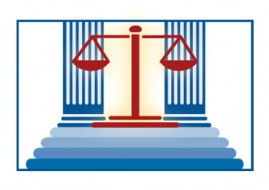When Case-Within-a-Case Method Helps Plaintiffs Prove Legal Malpractice
By Daniel L. Abrams
Causation is an essential element in any legal malpractice case. When the plaintiff alleges that an attorney mishandled a lawsuit, in order to prove causation the plaintiff must prove that it would have prevailed in the underlying lawsuit. The underlying lawsuit in a legal malpractice case is known as the “case-within-a-case.” Such legal malpractice cases are often said to be two cases in one. The underlying case and the malpractice case are tried as a single legal malpractice case (though on occasion the court bifurcates the trial so that the underlying case is tried separately). The defendant only needs to win one of the two cases in order to prevail.
Because plaintiff has to win “both” cases, and because litigating two cases adds expense that many plaintiffs are not in a position to incur, the “case-within-a-case” method of determining causation is largely believed to benefit defendant lawyers. I disagree. The “case-within-a-case” method favors the party who has less need for third-party evidence. And often it is the defendant lawyer who has a greater need for third party evidence.
Advantages for the Defense
To be sure, there are many published cases where the plaintiff cannot meet its burden of proving it would have prevailed in the underlying case. This is partly due to legal malpractice cases that should never have been started in the first place. Sometimes victims of attorney negligence erroneously assume that they can prove their legal malpractice case by focusing on the negligence. For example, a common pattern sees a plaintiff’s lawyer who takes a case on contingency and then realizes that the case is a weak one and makes a decision to neglect the file in favor of more promising cases. However unethical this neglect, the contingency lawyer is usually right about the merits of the underlying lawsuit. The same weaknesses that motivated the first lawyer to neglect the case — the inability to win the underlying case (now the “case within a case”) may also doom a subsequent legal malpractice case, despite wrongful conduct by the first lawyer.
The defendant lawyer can also benefit from its former fiduciary role, as the defendant has and is entitled to use previously privileged information about the strengths and weaknesses of a plaintiff’s case. But many times this benefit is illusory. For example, where the underlying litigation did not really get started as the result of attorney negligence, the attorney and client may have had little substantive communication that could be used against the client in the subsequent legal malpractice case. And a defendant attorney testifying about weaknesses in his former client’s case may come across as self-serving, particularly if the attorney previously touted the merits of the case or sought big damages.
In my view the biggest advantage to attorneys stemming from the “case-within-a-case” method are the meritorious cases which are never filed because of the costs and complexities associated with litigating two cases. Each “case-within-a-case” typically needs its own experts and fact witnesses. This adds considerable costs to litigating a legal malpractice case. Since insured attorneys have a ready source of litigation funding and many plaintiffs do not, anything that tends to make legal malpractice litigation more expensive, including the “case-within-a-case” method, will limit the number of legal malpractice cases.
Advantages for the Plaintiff
Once the legal malpractice case starts, however, a defendant lawyer faces unique problems in attempting to show that its former client would have lost the underlying case. The party testimony in a legal malpractice case is limited to the plaintiff and the defendant lawyer. By definition the defendant lawyer advocated the plaintiff’s position in the underlying case. Often the defendant lawyer will have made statements regarding the strength of plaintiff’s position on the merits in the underlying case. Such statements by a lawyer would have been inadmissible in the underlying case, but they probably come in as party admissions in a legal malpractice case. 4 Mallen and Rhodes, Legal Malpractice §37:118 (2015). The same is true of large damages demands in initial pleadings. A defendant lawyer who previously touted the plaintiff’s case can look foolish or worse arguing the opposite position in a legal malpractice case.
While the defendant lawyer can be impeached by prior statements, the lawyer is not a first-hand witness in the underlying case. Conversely the legal malpractice plaintiff is a witness for both cases. Persuasive testimony by a legal malpractice plaintiff gives the plaintiff a significant head-start in litigating the underlying case. The defendant lawyer was not directly involved in the underlying events and therefore has difficulty catching up. Often, the defense must rely on third-party evidence.
The key third party witness for the defendant lawyer is the underlying adversary. Just as one can expect a party to be the primary source of favorable evidence for its side, the underlying adversary is the primary source of evidence for the defendant lawyer in the “case-within-a-case.” The challenge for the defense is that the underlying adversary is not a party to the malpractice case. A party to a lawsuit has an incentive to vigorously develop a favorable record. This incentive is missing when an underlying adversary becomes a third-party witness in a legal malpractice case.
Sometimes the defendant attorney may not have access to evidence. Third party evidence related to the underlying case can be difficult to compel and gather in legal malpractice cases. Often the underlying events and case unfolded over the course of several years, and by the time there is a legal malpractice case the most salient third party evidence has been lost or innocently destroyed. Even where the evidence still exists, there may be problems compelling production. Legal malpractice cases generally take place in state courts, regardless of where the underlying lawsuit was venued, and there can be jurisdictional and practical barriers to obtaining necessary evidence.
Consider this hypothetical. Plaintiff is a female former federal employee who brings a gender discrimination claim against the federal agency which terminated her. Her attorney fails to file the administrative paperwork necessary to save the claim, and the statute of limitations expires. She then files a legal malpractice case in New York State Court arising out of the attorney’s failure to preserve the claim.
In this hypothetical, the “case-within-a-case” method benefits the plaintiff. The defendant lawyer has no first-hand knowledge of the underlying discrimination case. The plaintiff will likely provide testimony that establishes a prima facie case of discrimination. Most of the exculpatory evidence, if it exists at all, resides with the agency. As the statute of limitations expired on the underlying claim the legal malpractice lawsuit will take place several years after the firing, requiring the defendant lawyer to obtain somewhat stale evidence from the federal agency. This creates a mass of potential difficulties. The lawyer can expect practical problems with getting a federal agency to provide documentary or testimonial evidence for a state court proceeding. The federal agency may or may not provide the evidence voluntarily. The evidence may or may not still be available, and the alleged wrongdoers may or may not still be employed by the agency.
Even if the federal agency does provide some evidence, the evidence will not be as compelling or complete as it would have been if the underlying case had proceeded on a timely basis, with the federal agency an actual party to the case. The lawyer will either have to figure out how to obtain the evidence it needs or face the prospect of going to trial without any evidence to dispute the plaintiff’s version of the underlying events.
This is especially problematic for the defendant lawyer when one considers the fact that he steps into the shoes of the federal agency. If the plaintiff can set forth a prima facie case, then the federal agency has the burden of production to articulate a non-discriminatory reason for the adverse employment action. See, McDonnell Douglas v. Green, 411 U.S. 792, 802-03 (1973). The defendant lawyer in this hypothetical must articulate the non-discriminatory reason for the federal agency’s termination of the plaintiff. The lawyer here is in a bad spot — needing third party evidence that may or may not be available in discovery.
The defendant lawyer can face an even more precarious position when the former client was a defendant in the underlying lawsuit. The lawyer whose alleged malpractice leads to a defendant-client to suffer a judgment or settlement (effectively compelled by the lawyer’s) malpractice steps into the shoes of the underlying plaintiff and probably bears the same burdens. See, St. Paul Fire & Marine Ins. Co. v. Birch, Stewart, Kolasch & Birch, LLP, 408 F. Supp. 2d 59, 61 (D. Mass. 2006), to win the “case-within-a-case” legal malpractice plaintiff only had to prove what it needed to prove in the underlying case; cf. Scher, 94 A.D.2d at 552.
For example, consider a defendant lawyer who fails to answer a fraud claim, leading to a default judgment in favor of the underlying plaintiff. The client who was a defendant suffers the judgment and then becomes a legal malpractice plaintiff. Either the client pays off the judgment creditor to satisfy the judgment, in which case the client sues the lawyer for the amount of the pay-off, or the client becomes a judgment debtor and then sues the lawyer hoping to use the proceeds from the malpractice case to settle the debt.
In the malpractice case, the lawyer defendant steps into the shoes of the underlying fraud plaintiff and must prove his former client’s fraud. Fraud is hard to prove even with the cooperation of the victim. The defendant lawyer will at a minimum need testimony from the underlying plaintiff. The underlying plaintiff may or may not be available to testify. Even if the underlying plaintiff can be compelled to testify, the testimony will likely take place years later, with a witness who does not have the same incentives to testify persuasively about the fraud.
The underlying plaintiff may even be incentivized to harm the defendant lawyer’s case. Where legal malpractice leads to a judgment which remains unsatisfied, the legal malpractice plaintiff still owes the underlying plaintiff money due to the judgment. If so the underlying plaintiff may see the legal malpractice case itself as a potential source of recovery. In this instance the two underlying adversaries are somewhat aligned — both benefit from a legal malpractice judgment or settlement that pays off the judgment. This can further complicate an attorney’s defense.
A final concern for attorneys is that a court may conclude that a negligent attorney cannot benefit from an evidentiary gap in the plaintiffs’ case, where the reason for the gap is fairly attributed to the attorney’s own negligence. Gotay v. Breitbart, 14 A.D.3d 452, 455 (N.Y. 1st Dept. 2005). The limits of this principle are not well defined. But there is no corollary legal principle that provides relief to attorneys.
Conclusion: Best Practices
The lawyer’s access to credible, favorable third party evidence is key. If a legal malpractice plaintiff can testify credibly about underlying events, then the plaintiff has a significant head start over a lawyer defendant who was not involved in the underlying events and must now obtain and rely on testimony from strangers to the malpractice case.
This dynamic does not change the basic realities of legal malpractice litigation. Legal malpractice cases are expensive to prosecute and difficult to win. Even where the “case-within-a-case” formulation helps the plaintiffs, plaintiffs still must prove negligence and actual damages. Plaintiffs also must contend with a number of affirmative defenses which are popular with the defense bar. The numerous obstacles facing a plaintiff make it all the more reasonable that an attorney may face some proof problems in the “case-within-a-case.” An attorney should not have an easy time explaining away incompetence as being inconsequential.
Attorneys litigating legal malpractice cases should carefully consider their client’s positions in the “case-within-a-case” at or near the case intake stage. The key intake questions: Is the legal malpractice plaintiff a credible witness to the underlying events? What do the jury instructions for the underlying case look like? Who has the burden of proof and production? What third party evidence is needed, and how can it be obtained? What is the posture and availability of the underlying party or parties? Is expert testimony necessary, and if so, what fact testimony is necessary to support the expert? Early answers to these questions are key to effective case valuation and trial preparation. The answers will also help defendant-lawyers and their counsel evaluate the merit of the claims, defenses, and their strategy for defending the case.
Daniel L. Abrams is the principal of The Law Office of Daniel L. Abrams, PLLC. He represents clients in legal malpractice cases, other cases involving the law governing lawyers, and business litigation. For more information see, http://www.LawyerQuality.com. Mr. Abrams can be reached at Dan@LawyerQuality.com
Get CLE Credit for this month’s articles (May 2015).
DISCLAIMER: This article provides general coverage of its subject area and is presented to the reader for informational purposes only with the understanding that the laws governing legal ethics and professional responsibility are always changing. The information in this article is not a substitute for legal advice and may not be suitable in a particular situation. Consult your attorney for legal advice. New York Legal Ethics Reporter provides this article with the understanding that neither New York Legal Ethics Reporter LLC, nor Frankfurt Kurnit Klein & Selz, nor Hofstra University, nor their representatives, nor any of the authors are engaged herein in rendering legal advice. New York Legal Ethics Reporter LLC, Frankfurt Kurnit Klein & Selz, Hofstra University, their representatives, and the authors shall not be liable for any damages resulting from any error, inaccuracy, or omission.
Related Posts
« When You Can Contact Others Who Are or Were Represented by Counsel: Part II Recent N.Y. Ethics Opinions: June 2015 »














